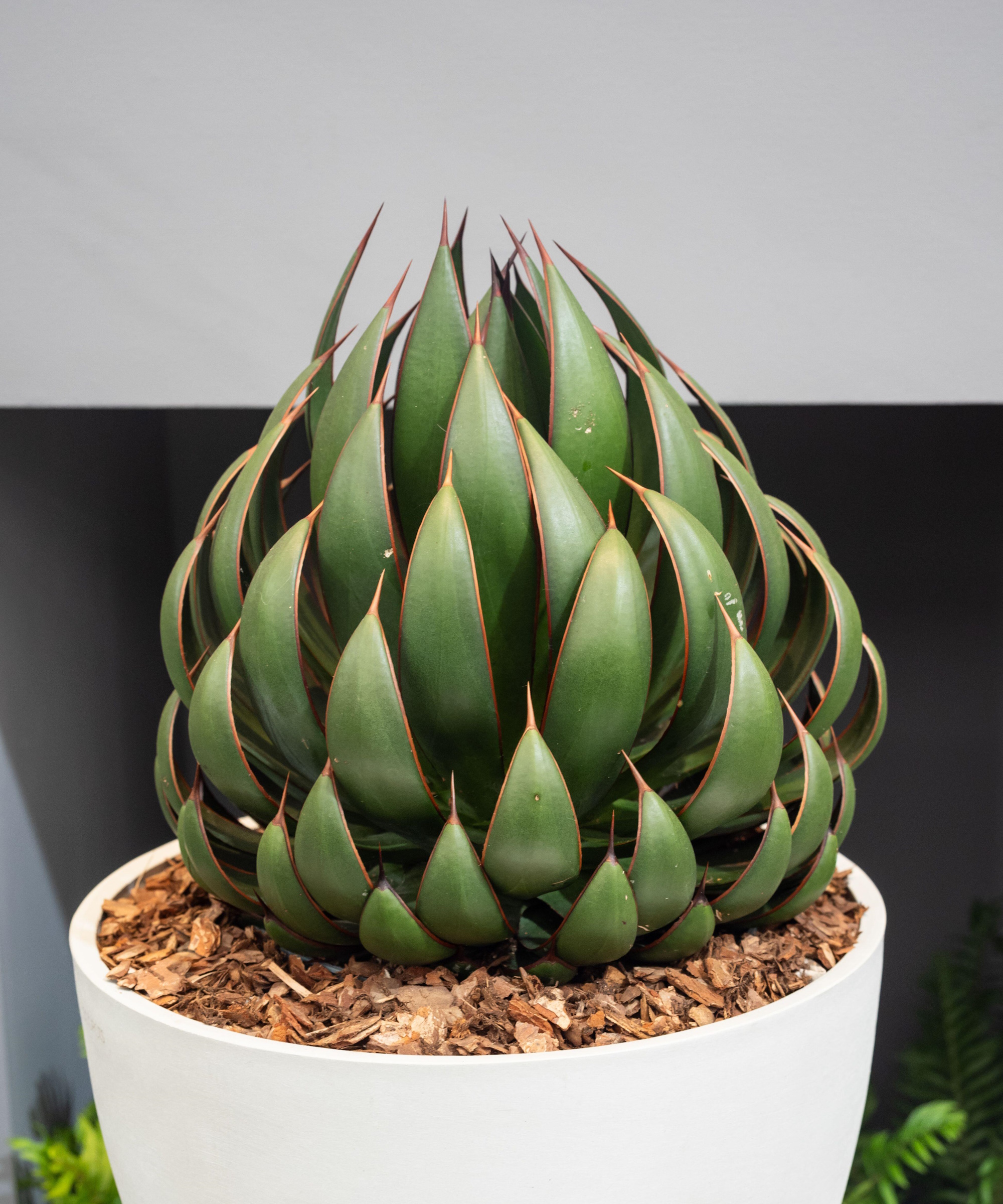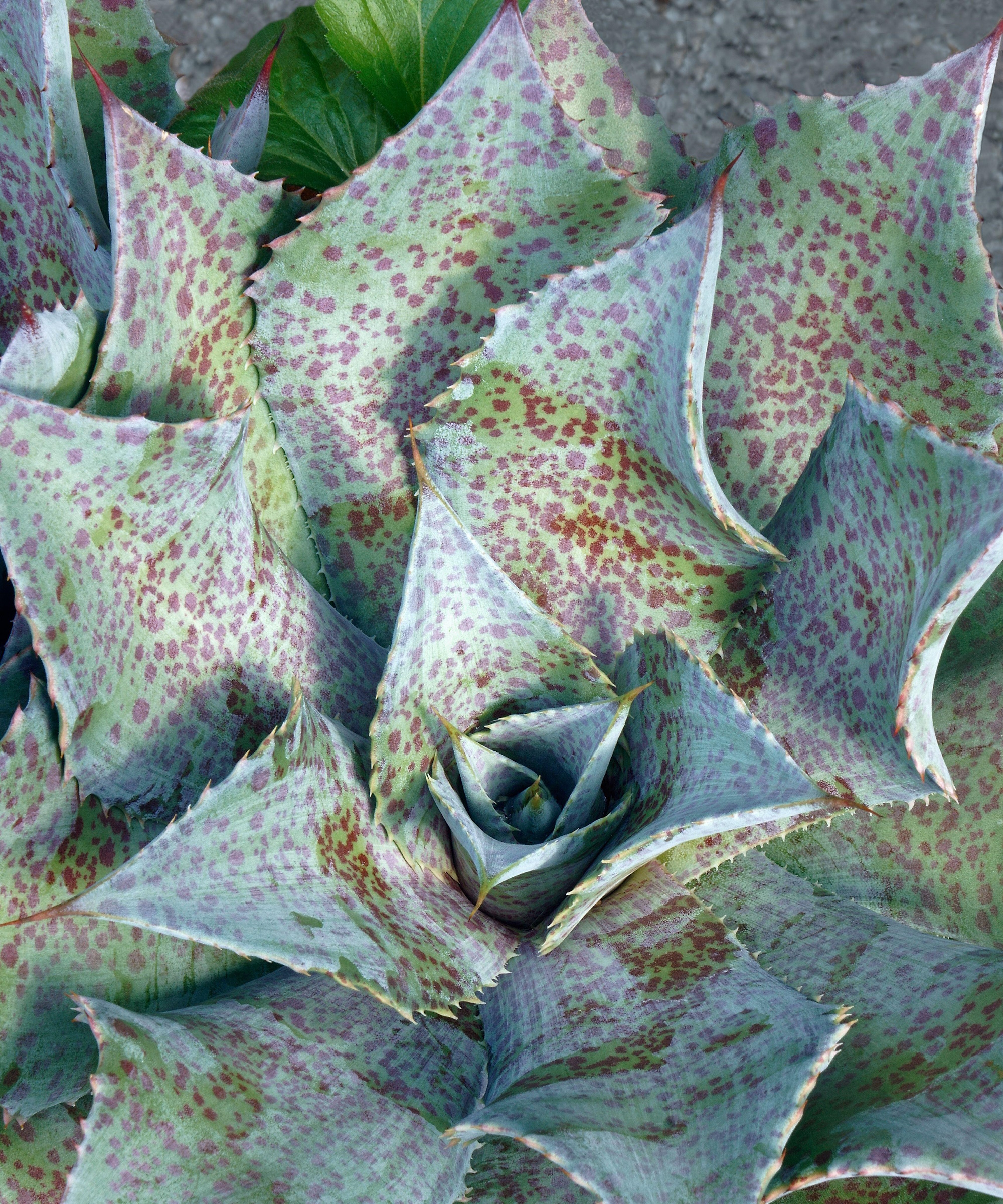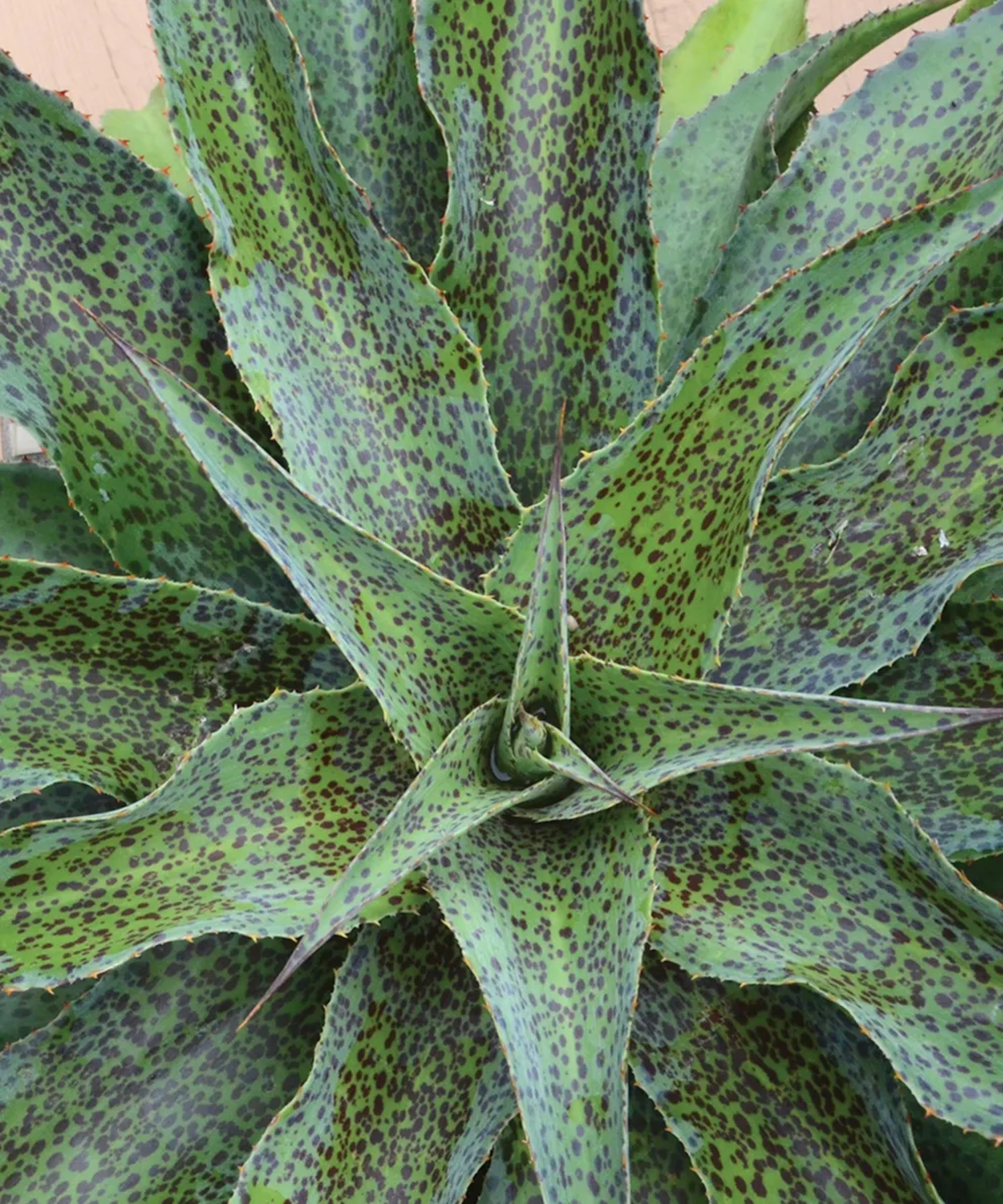Best agaves – 10 varieties guaranteed to bring drama to your yard
These structural desert plants can live up to 100 years before flowering


Most of us know agave for one thing only – it’s the plant from which tequila is made. The state of Jalisco, on the west coast of Mexico, is the historic center of tequila production and still provides 80% of the crop. The unusually vigorous Agave tequilana ‘Weber Azul’ is by far the most popular variety for tequila production.
Among the best desert plants, there are also many other species and varieties that make dramatic garden plants, especially in the dry south west. They make eye-catching container plants in cooler regions. Growing wild from Utah to southern Mexico, they are often called century plants because in their wild homes they can live for a hundred years before flowering, developing seeds and then dying. Before dying they also often produce pups - small plants at the base of the original, ideal for propagation.
Here we look at 10 of the very best agave varieties to consider adding to your yard for some garden theatre.

Why choose an agave for your yard
- Dramatic, mostly frost tender, rosette evergreens with a wide variety of leaf patterns and sizes.
- Good drainage is essential.
- Happiest in full sun.
- Allow space for plants to reach their expected mature size.
- Beware of the spines.
- Detach pups occasionally to make new plants.
Agave plants all have the same general appearance. Each plant is made up of a bold rosette of succulent leaves, sometimes leathery, usually in bluish or grayish shades, and with a wide variety of spotting or variegations. Many of the best agave varieties have a sharp spine at the tip of each leaf, some are also spiny along the leaf edges.
Agaves are grown for their dramatic rosettes of foliage and for their tolerance of hot sun and dry soil. New varieties are introduced regularly adding to the range of foliage shapes and patterns. They vary in their tolerance of winter cold, a few are hardy to zone 7, most to zone 9. All are deer resistant. It is also possible to grow agave indoors.
As with the tequila agave, garden agave plants die after flowering so it pays to detach and re-plant some of the pups produced in the plant’s younger years.
Agave americana var. marginata

This popular and long-established variety features slightly waved, deep green leaves, sometimes with a bluish tint, edged in bright yellow-gold. The overall effect is dramatic and eye-catching. Easily available and inexpensive, a good first choice for newcomers to agaves.
Main features Green leaves, edged in gold. Easy to find at an attractive price.
Good for Hot sunny borders, containers.
Care Remove old and shriveled leaves from the base of the plant.
Hardiness USDA zones 8-11.
Size of rosette 4-6ft high, 8-10ft wide.
Agave ‘Blue Glow’

This unusually neat growing variety features slender blue-green leaves with hints of reddish purple along the sharp, but not spiny, edges. Each leaf is tipped with a spine. Flowers at a younger age than many agaves.
Main features Compact growth, rich coloring, good by the sea.
Good for Small spaces, containers, the front of the border.
Care Remove old and shriveled leaves from the base of the plant.
Hardiness USDA zone 8-11.
Size 2-3ft high, 2-3ft wide.
Buy Agave ‘Blue Glow’ from Nature Hills.
Agave ‘Lavender Lady’

One of the stars of the Mangave Series, the leaves come in smoky, lavender purple rosettes open spotted in pale purple at first, then slowly mature to gray-green. Each leaf is tipped by a neat, but soft, spine and there are soft spines along the leaf edges.
Main features Neat, but striking, softly colored rosettes. Hardier than many.
Good for Use as a very attractive small specimen for containers, or small spaces.
Care Plant in full to half day sun in well-drained soil.
Hardiness USDA zone 8-10.
Size 24in high, 24in wide.
Buy Agave ‘Lavender Lady’ starter plant from Walmart
Agave Mangave Series
This recently developed series of hybrids brings us fast growth, neat habit, and foliage in many attractive patterns. Most have no sharp spines. Clumps are far less likely to die after flowering than other varieties of Agave and also tend to produce more pups.
Main features Neat, adaptable growth, a wide range of attractive leaf patterns.
Good for A fascinating collection, an wide range of beautiful colors and patterns.
Care Plant in full sun, little or no watering needed.
Hardiness USDA zone 7-11, depending on variety.
Size 6in – 2ft high, 1-5ft wide.
Agave ovatifolia ‘Orca’
A stunning plant, found growing wild in the mountains of northern Mexico, the blueish leaves are striped in creamy yellow - they’re a little like those of a hosta although enjoying very different conditions - and have small black pines along the edges.
Main feature Very striking shape and leaf coloring.
Good for Xeriscaping, any sunny and dry spaces, containers.
Care Plant in full sun, little or no watering needed.
Hardiness USDA zone 9-11.
Size 2ft high, 4ft wide.
Agave ‘Praying Hands’

One of the latest varieties in the Mangave Series, making a compact rosette that’s initially reminiscent of an artichoke, with its succulent blue-grey foliage finely edged in red and with a red spine at the tip.
Main feature Very striking shape and color.
Good for The smallest sunny spaces, ideal in a glazed pot.
Care Plant in full sun, little or no watering needed.
Hardiness USDA zone 9-11.
Size 12in high, 12in wide.
Agave parryi

One of the hardiest of all agaves, it develops an upright cluster of fat, succulent, blue-green leaves armed with sharp spines.
Main features Frost hardiness plus dramatic shape and attractive price.
Good for Any sunny and well-drained places, avoid injury to kids by planting away from paths and decks.
Care Plant in full sun, little or no watering needed.
Hardiness USDA zone 6-9
Size 2-3ft high, 2-3ft wide.
Buy Agave parryi from Nature Hills.
Agave 'Sponge Paint'

This miniature variety features silvery gray leaves speckled in reddish-purple spots, the oldest leaves developing red and yellow shades.
Main features Miniature size, attractive foliage.
Good for Indoor or deck collections, plants also look good planted as satellites to larger varieties.
Care Plant in full sun, little or no watering needed.
Hardiness USDA zone 9-11.
Size 6in high, 14in wide.
Agave ‘Spotty Dotty’

The long beautifully shaped and patterned green leaves are evenly spotted in burgundy red, their edges gently waved and with a dark orange-red spine at the tip. No wonder agaves are deer resistant!
Main features Wavy, dark green leaves, spotted in dark red. Makes an impressive specimen.
Good for Hot borders, containers.
Care Plant in full sun, little or no watering needed. Remove old leaves from the base of the plant.
Hardiness USDA zone 8-11.
Size of rosette 12in high, 30in wide.
Buy Agave ‘Spotty Dotty’ from Burpee.
Agave victoriae-reginae

A neat cluster of fat green leaves, naturally edged and marked in white, create a very attractive plant. Native to the dry mountains of southern Mexico and across the border into New Mexico, the so-called Queen Victoria’s century plant was first grown in the 1870s. Easy to find at an attractive price.
Main features Prettily marked foliage, good availability and price.
Good for A fine first plant for a collection, easy to grow and tolerant.
Care Plant in full sun, little or no watering needed. Good in a terracotta pot. Hardier than many.
Hardiness USDA zone 8-11.
Size 12in high, 24in wide.
FAQs
What’s so good about agave?
Agaves have been grown outside in the south west, and with protection in cooler zones, for over a hundred years but the introduction of the Mangave Series in 2018, has highlighted their value.
The Mangave Series, developed in Michigan (for warmer zones), has brought us an astonishing range of rosettes in different styles, foliage in different shapes and sizes, and with a rapidly increasing range of attractive foliage colors and markings.
These are look-after-themselves plants for well-drained soil with plenty of sunshine. The variety of shapes, sizes and colors allows plantings of a number of different varieties to be very attractive – perhaps with other succulents such as sedums, echeverias and aeoniums. Mulching with gravel suppresses weeds and shows off the plants beautifully.
Can I make tequila from agaves at home?
Yes, you can – though it takes time and trouble. But the trick is not to hunt out the best variety of agave to grow for tequila, wait at least twenty years for it to be ready to harvest - and then destroy the plant in the harvesting process.
Alternatively, forget all that and buy Blue Agave nectar, it’s easy to find at Walmart. You’ll also need tequila yeast, raw cane sugar a fermentation bucket other equipment. But, I have to say, most people who think about making their own tequila end up buying a bottle from the store – ready made to enjoy.
If you live in a hot climate, we have lots of inspirational features on xeriscaping, and other drought-tolerant landscaping ideas, where agaves would fit right into any planting scheme.
Sign up to the Homes & Gardens newsletter
Design expertise in your inbox – from inspiring decorating ideas and beautiful celebrity homes to practical gardening advice and shopping round-ups.

Graham Rice is a garden writer who has won awards for his work online, and in books and magazines, on both sides of the Atlantic. He is a member of a number of Royal Horticultural Society committees and the recipient of the 2021 Garden Media Guild Lifetime Achievement Award. He gardened in Pennsylvania for 20 years, but has recently returned to his native England.
-
 Everyone is obsessed with vintage tiles right now – bring the nostalgic charm of this classic design feature into your home with our 5 design ideas
Everyone is obsessed with vintage tiles right now – bring the nostalgic charm of this classic design feature into your home with our 5 design ideasHonor the past with our favorite ways to decorate with vintage tiles, as suggested by interior design experts
By Eleanor Richardson Published
-
 'It's a fast reset button' – using the 1, 2 ,3 ,4, 5 decluttering method cleared my persistent mess in seconds
'It's a fast reset button' – using the 1, 2 ,3 ,4, 5 decluttering method cleared my persistent mess in secondsIt's easy, effective and so quick to do
By Ottilie Blackhall Published